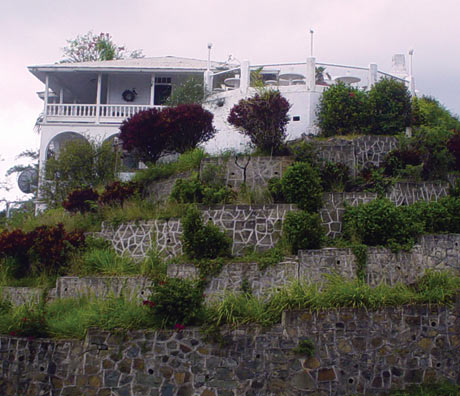
Built during the interwar era (1917-1939), many country homesteads in Cayey's barrio of Jájome exemplify a local Puerto Rican landscape design tradition previously thought to be extinct.
These properties link architectural typology with topography, and their gardens are integrated into the terrain as strategic features rather than as decoration. In fact, the gardens of Jájome provide a paradigm for future interventions on similar hillsides. However, few people are aware of this treasure, mostly due to the rural isolation of this area. Lack of professional documentation of the gardens - as well as the potential for mining in this zone - jeopardize this 'invisible' patrimony, risking not only the landscapes themselves but also the collective civic and societal heritage of Cayey and the Commonwealth of Puerto Rico.

